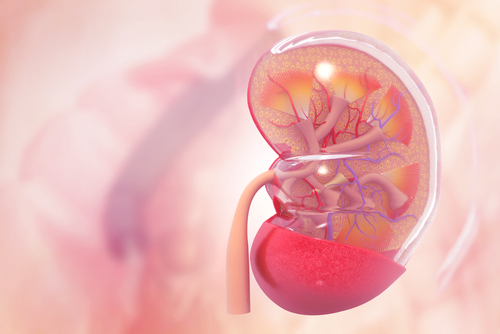Benlysta Maintenance Does Not Change Kidney Function of Lupus Nephritis Patients, Phase 2 Trial Shows
Written by |

Using Benlysta (belimumab) as a maintenance therapy after Rituxan (rituximab) leads to similar kidney function in patients with lupus nephritis compared with Rituxan alone, according to a Phase 2 clinical trial.
The research, “Phase 2 Trial of Induction Therapy with Anti-CD20 (Rituximab) Followed By Maintenance Therapy with Anti-BAFF (Belimumab) in Patients with Active Lupus Nephritis,” was presented at the recent 2018 American College of Rheumatology/Association for Rheumatology Health Professionals Annual Meeting in Chicago.
Two randomized trials studying the lupus treatment Rituxan, by Genentech/Biogen, have failed to meet their goals in patients with lupus and lupus nephritis — a type of kidney inflammation caused by lupus.
One possible explanation is the elevated B-cell-activating factor (BAFF) levels seen in lupus patients after treatment with Rituxan. BAFF is essential for the survival of B-cells and an increase in this factor is thought to favor the expansion of autoreactive B-cells — which produce antibodies against the body’s own tissues — leading to lupus flares.
The Phase 2 trial (NCT02260934), called CALIBRATE, intended to explore this hypothesis, to assess whether adding GlaxoSmithKline’s anti-BAFF immunosuppressant, Benlysta, could improve the clinical effects of Rituxan, and to determine the safety of the combination therapy.
The open-label trial included 43 patients with active, proliferative lupus nephritis despite standard treatment. All participants received 1,000 mg of intravenous (into the bloodstream) Rituxan, 750 mg of the immunosuppressive therapy cyclophosphamide, and 200 mg of the corticosteroid methylprednisolone at the start of the study and the second week, and an initial daily prednisone dose of 40 mg, which was progressively lowered to 10 mg by week 12.
At week four, patients were randomized to Benlysta — 10mg/kg in the fourth, sixth, and eighth weeks, and every four weeks thereafter — plus prednisone (21 patients), or prednisone alone (22 patients).
Renal responses were defined as n estimated glomerular filtration rate (eGFR) of 120 or greater or, if under 120, greater than 80% of eGFR measured at screening and prednisone dose of 10 mg/day. Patients with complete responses also had a urine protein:creatinine ratio (UPCR) under 0.5, while those with a partial response had a more then 50% reduction in this measure.
At week 48, however, the rates of renal response were similar between the two groups — complete responses were seen in 38% of the Benlysta group and 32% of the Rituxan group.
Both groups showed peripheral B-cell depletion by week 12, but Benlysta delayed B-cell repopulation. In addition, median levels of IgG — the most abundant immunoglobulin class in humans — were within the normal range both with and without Benlysta.
Five patients on prednisone only and two on Benlysta and prednisone experienced severe or higher infectious adverse events, all of which were resolved.
These results revealed “no difference in the rate of renal response at week 48 in subjects who received [Rituxan] followed by anti-BAFF [Benlysta] therapy compared with [Rituxan] alone,” the scientists wrote.
They added that future analyses at week 96 will further reveal effects of Benlysta on B-cells and longer-term clinical outcomes.
Of note, three of the study’s authors disclosed financial conflicts related to Genentech and/or GSK.




